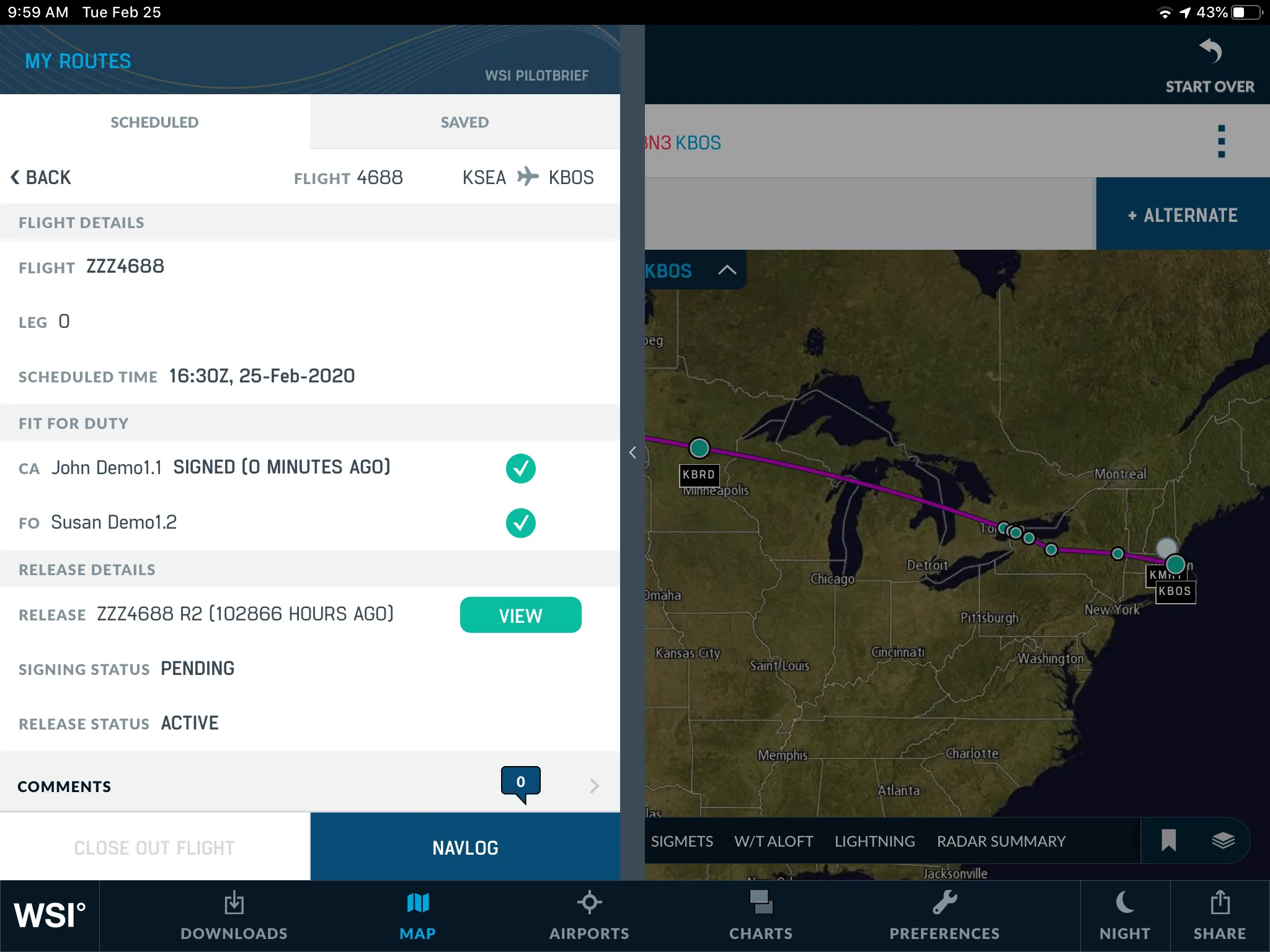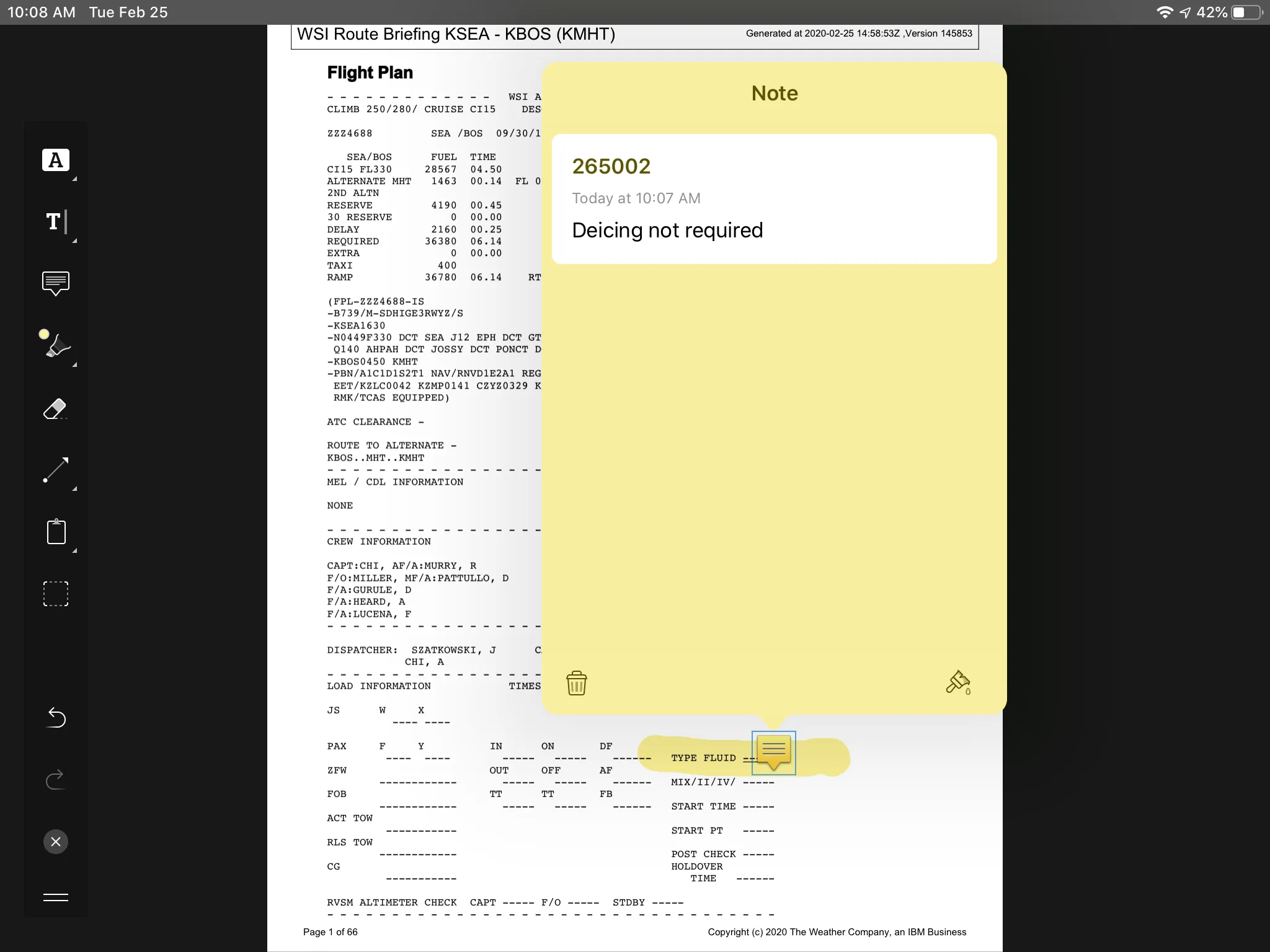How IBM Cognitive Applications uses Nutrient to streamline flight releases
Table of contents

IBM Cognitive Applications is a company that develops technological solutions in the cognitive computing and artificial intelligence realm. One of the company’s aviation products(opens in a new tab) is Pilotbrief(opens in a new tab), a weather application that provides airlines around the world with weather-related data. It integrates with an Electronic Flight Bag (EFB), which is a device that has replaced the physical bag full of operating manuals, airway charts, crew schedules, flight logs, airport and route information, and weather information that pilots previously had to carry in a physical format. In place of paper, it stores and retrieves digital copies of documents required for flying.
In addition to Pilotbrief, many of IBM’s customers in the US and Canada also use the Digital Flight Release (DFR), which is an add-on to Pilotbrief. According to the company’s Flight Deck Solutions Offering Manager, Scott Gilmore, “the flight release is the paperwork from the airline dispatcher that certifies the route is planned and safe to fly. The airline can push the flight release to the pilots assigned to a flight. The pilots can then sign fit for duty and download and sign the flight release electronically, all from their iPads.”
Since 2016, IBM Cognitive Applications has used Nutrient in its Pilotbrief app to:
- Provide pilots and crews with weather briefings and updates
- Allow airline employees to read, sign, share, and store digital flight releases
- Let users add notes in the form of annotations before, during, and after flights
- Save annotations so that they are permanent and inalterable records
“Pilotbrief is used by many major and regional airlines worldwide and has over 90,000 users. Currently there are more than 34,000 commercial pilots using Pilotbrief in North America every day.”
*- Scott Gilmore, Flight Deck Solutions Offering Manager, IBM Cognitive Applications *
The Challenge
The Pilotbrief product page describes it as “a pilot weather briefing product that gives pilots and crews visualized aviation weather, airspace notifications and actual flight plans on one interactive workspace.” This helps pilots make informed decisions about flying and gives them easy access to alternatives should their planned flight not be safe or possible.
In its earliest incarnation, Pilotbrief was known as Pilotbrief Optima Web, which, according to Gilmore “was a true desktop flight-planning solution.” This was before the days of internet connectivity in airplanes, so it was used as a preflight tool that allowed pilots, dispatchers, and flight operators to look up flights in advance, see what kind of weather was expected, and choose the best FAA routing for the situation.
In the meantime, iPads began gaining traction among airlines as the ideal device to have in the cockpit. “Of course nobody had any connectivity in flight,” Gilmore, who is a former airline pilot, said. “But once passengers started screaming ‘We want Wi-Fi,’ then it slowly started leaking up to the cockpit.” And with internet access during the flight now a reality, suddenly Pilotbrief became much more useful. In particular, it gave IBM the ability to expand upon its offerings so that it was no longer just a preflight tool.
Because iPads clearly became the device of choice in the cockpit, and because pilots suddenly had access to the internet beyond the gate, IBM saw this as an opportunity to respond to the changing industry and ramped up its product offerings. Now instead of weather insights, pilots could access everything they needed to know for flying — at any point before, during, or after flight — along with all the accompanying paperwork.

And there’s a lot of paperwork involved in every flight.
“In a digital flight release, the big value add is that airlines don’t have to print 90 pages of a flight release and then try to find a way to get it to the pilots to sign it,” Gilmore said. “And then, by the way, once it’s signed, that paperwork is literally mailed to the company’s headquarters and it just sits in a file box for 90 days until you don’t need it anymore.”
So in place of printing, delivering, signing, mailing, and filing the paperwork — and sometimes having to do this multiple times per flight if changes are made to the flight plan at any point — everything is streamlined on iPads.
Gilmore also explained that while many people assume printing all the paperwork costs a lot, the price of paper and ink is relatively insignificant compared to the cost of time lost.
“Imagine an airplane is sitting there for 27 minutes of time that it could be moving toward its next destination. And then take that and magnify that where it backlogs, because an aircraft, especially domestic, literally might fly 10 segments a day,” he said. “And so if you had a delay of 30 minutes for paperwork, and then the flight is diverted and that adds another hour more, you keep adding that up, and it’s hard to get it back on track.”
At the end of the day, time saved equals money saved.
“The digital flight release is such a big value add, because of the sheer amount of money it costs per minute to just run a commercial aircraft.”
*- Scott Gilmore, Flight Deck Solutions Offering Manager, IBM Cognitive Applications *
The Solution
For IBM, the decision to streamline the DFR process made complete sense. But according to Gilmore, airlines receive flight plans in the PDF format, and as such, finding some kind of solution with support for PDF was essential.

In particular, IBM needed something that allowed users to:
- Open and view PDFs
- Take notes in the form of annotations
- Sign off on flight plans and other important paperwork
- Search quickly and accurately
- Make use of night mode, which is visually important in the cockpit
Once they had a list of necessary features, IBM began to search for a solution, and that led them to Nutrient.
“Nutrient allows us to use flight plans from the airline providers with ease. If not, we would have to either change the format or come up with another solution.”
*- Scott Gilmore, Flight Deck Solutions Offering Manager, IBM Cognitive Applications *
The Results
According to Gilmore, “iPads have changed the industry.” And in response to that, IBM needed a solution to bring its product up to date with the technology and capabilities available to pilots.
Because Nutrient iOS SDK supports viewing, annotation, digital signatures, search, and more, and because Pilotbrief has the iOS SDK integrated into it, pilots have access to all the information and forms they need on their iPads. Additionally, the DFR add-on lets airline crews streamline their workflows and reduce the amount of physical paperwork.
“Using Pilotbrief and Nutrient allows this all to be done electronically, saving not only paper but also precious time.”
*- Scott Gilmore, Flight Deck Solutions Offering Manager, IBM Cognitive Applications *







